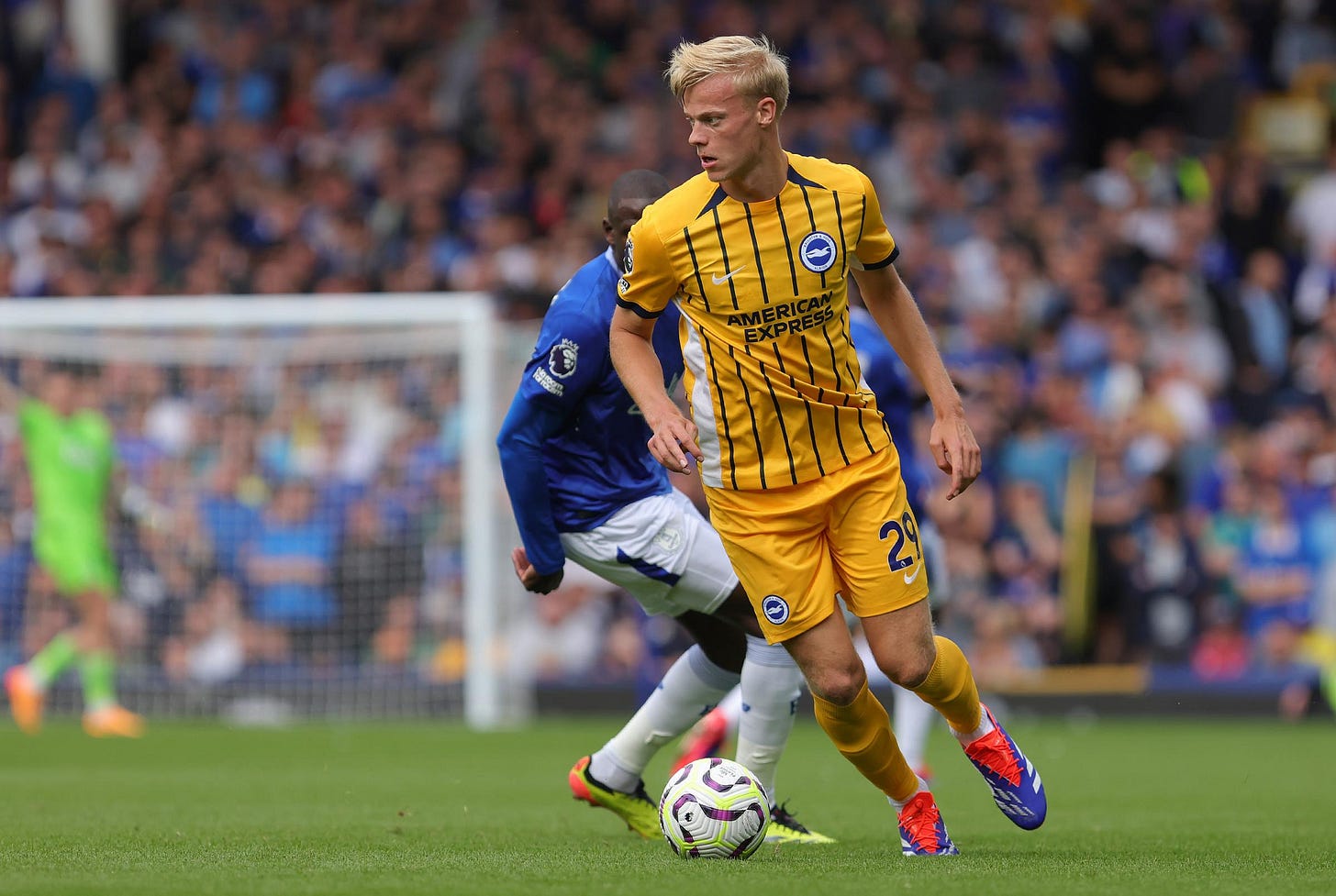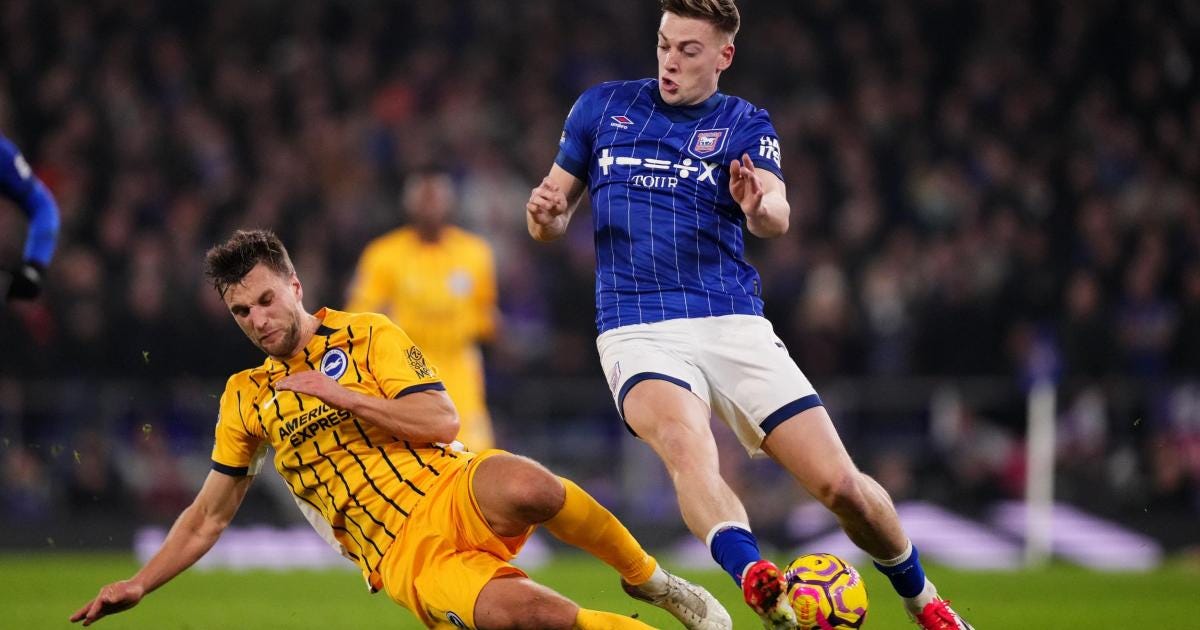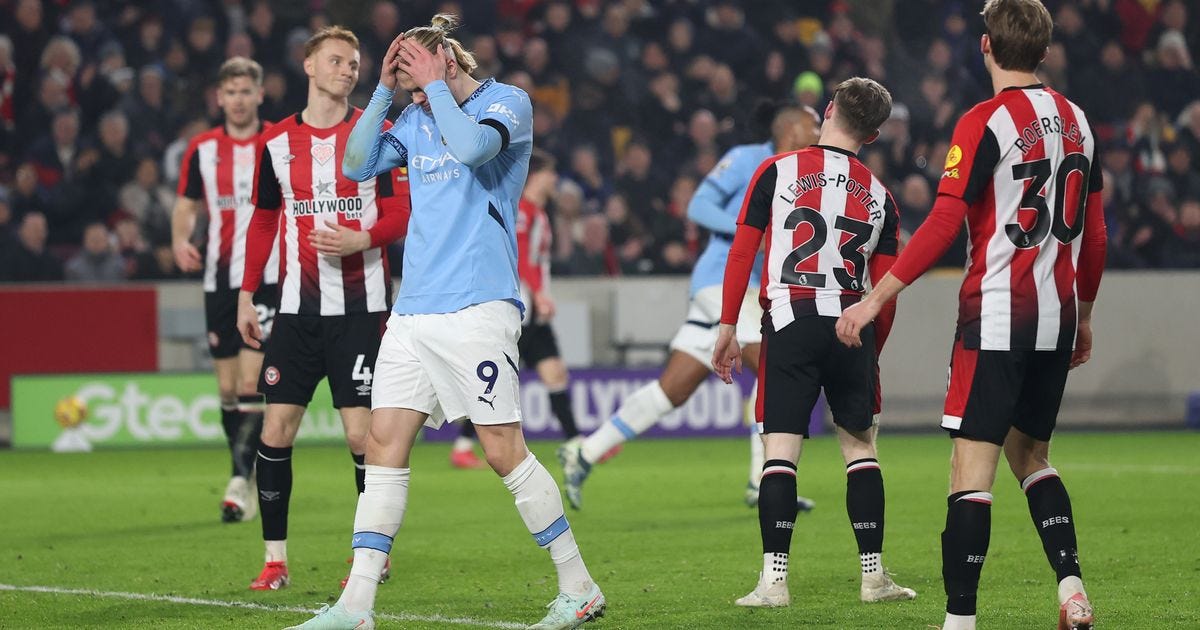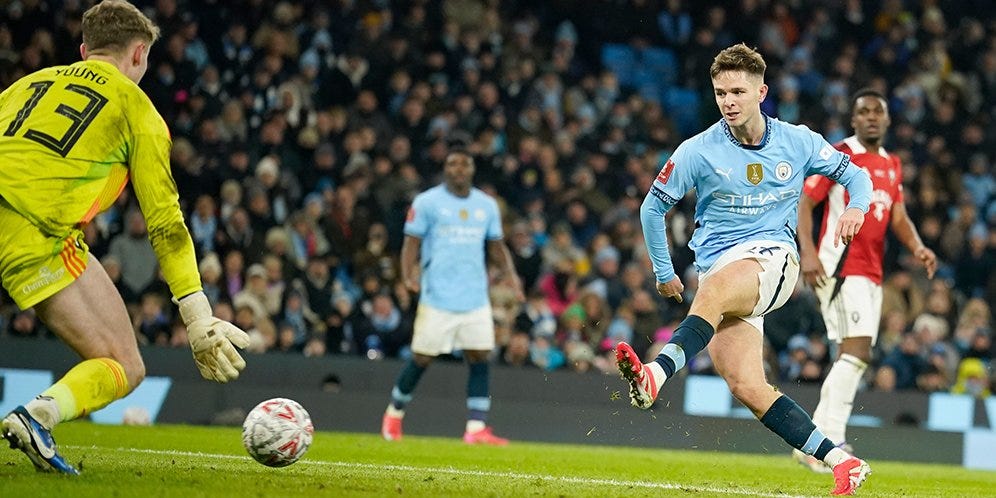Daryl's Notebook: What I learned from English football
The Notebook is back and it is better than ever!
It is the return of the Notebook and the Premier League just has to be the first league that I watch on the Notebook’s return. I was intentionally avoiding the Premier League since there is already a lot of coverage around the league, but there is a particular reason that I decided to start with the EPL for this edition.
The next three editions of the Notebook, which includes this one and the next two, will be themed around…something that I can’t reveal, the only thing that I can say is it is data-themed because I am a data nerd. But for anyone who wants to take a guess as to what the theme is, the clues are in the teams that I have chosen to watch and I will leave a couple of clues in the images that I choose. See if you can pick out what I am working on in the background and maybe which metric did I use to get to the topic that I want to work on!
But for now, let’s get into some Premier League matches!
Ipswich 0-2 Brighton
How Brighton played out from the back during the early minutes was very interesting to me. Going up against Ipswich’s 3-4-2-1 mid-block, Brighton decided to match them at the back by having right-back (#34) Joël Veltman stayed deep while left-back (#30) Pervis Estupiñán pushed higher up the pitch. Sometimes, it was also possible to see Veltman pushed forward instead, but then midfielder (#20) Carlos Baleba would split the centre-backs to retain the back three for Brighton.
Going back to Estupiñán, the Colombian left-back pushed forward but he sat narrower inside the left half-space to allow left winger (#22) Kaoru Mitoma to stay wide and closer to the touchline. I think that played into Mitoma’s strengths because the Japanese winger thrived at taking on opposition’s defenders and getting past them with his dribbles. At the same time, Estupiñán’s preference of making forward runs was also satisfied, but his runs now were underlapping runs instead of overlapping runs.
I could see why many have been saying that Ipswich are a well-coached team by Kieran McKenna. When they played out from the back, it did not seem like the players were lost and had no clear ideas of how to get the ball forward. The double pivot of (#8) Kalvin Phillips and (#12) Jens Cajuste were always ready to receive the ball from the keeper and the centre-backs, then flicked it on to players who could dribble their way out of pressures like left wing-back (#3) Leif Davis, right wing-back (#7) Wes Burns, or attacking midfielder (#20) Omari Hutchinson. Some of the times it did not work since Brighton players were always ready to intercept passes or to make challenges right inside of Ipswich’s defensive third, but other times that worked, they did manage to get the ball very far into Brighton’s own half, though lacked a bit more to create proper goal-scoring chances.
Attacking a back five is always a tough ask, but Brighton proposed two interesting solutions. On the left wing, even though Ipswich tried to use four players to create overloads, the away side would have Mitoma and Estupiñán stayed on the outside of Ipswich’s wide players and attempted to stretch that block of four. This, in turn, would open up space, usually inside the half-space, for midfielder (#26) Yasin Ayari to make a run into and either Mitoma or Estupiñán would make a pass into Ayari’s run path. Similar concept on the right-hand side as Brighton attempted to drag most of Ipswich’s defensive block towards the right wing, but Veltman and right winger (#11) Simon Adingra also had the option to make crosses into the box. Those crosses would usually be aimed towards the far post, where Mitoma and striker (#9) João Pedro positioned and had already set up two 1v1 situations to challenge the ball in the air. Here’s a little video that I made about this!
While there was nothing too special, Brighton’s 4-4-2 press still caught my attention for a bit since their man-to-man pressing system was very well-coordinated in looking to guide the opposition out wide and triggering at the right time when the ball was played down the middle. The players knew where to be and who to close down at what moment, which did not give Ipswich too many opportunities to get the ball to their attackers. Instead, they were stuck between circulating the ball among the defenders and the double pivot, and ended up making a misplaced pass most of the time to allow Brighton players to intercept those passes.
Ipswich were getting more and more chances as the first half went on, but most of those chances were from long shots taken just outside of the box. While it seemed like they were getting closer to a goal on paper, the home side was not because Brighton seemed to be happy conceding chances similar to those and keeper (#1) Bart Verbruggen dealt with most of those chances quite easily.
Going back to Brighton’s ideas to attack Ipswich’s back five, one of those ideas actually helped the away side opened the score. From a situation where they overloaded the right-hand side, Ayari was able to make a run into the half-space to receive the ball from Veltman, who then made a cutback to (#33) Matt O’Reilly and he laid the ball off to Mitoma for a well-scored goal into the bottom right corner.
Ipswich attempted to press high when Brighton played the ball back to their keeper Verbruggen, but Brighton just looked very good when they played through the lines and used a low number of passes to get the ball back to forth. This made Ipswich’s press became ineffective and even left them exposed in between the lines, where Brighton attackers usually operated to pick up the ball from the back and made runs at Ipswich’s defence. Just very, very high tactical quality stuff from Brighton.
A second goal from substitute (#14) Georginio Rutter that came from a scrambled situation after a free kick basically sealed the game for Brighton, in a match where they just dominated and displayed high quality stuff all throughout the match.
Brighton 1-1 Arsenal
Brighton continued to build up with a back three with one of the central midfielders moving close to the centre-backs. But against Arsenal’s 4-4-2 pressing shape, that back three chose to stay narrow and close to each other to open up passing lanes out wide. With Brighton’s preference to attack down the flanks and utilising the wingers’ ability to take on opposition’s defenders, keeping the wide passing lanes opened for most of the time would allow them to progress the ball easier.
For Arsenal, they did not use any special rotations or movements, but rather retained their 4-1-2-3 possession shape to play through Brighton’s mid-block. This came with an advantage which allowed the away side to form a small group of players when they played the ball to either flank and utilised the positioning of the midfielders to circulate the ball through the defensive lines.

So far, Arsenal have pressed Brighton very well from inside the host’s defensive third. Brighton seemed to be happy to play out from the back even from goal-kicks, which allowed Arsenal to squeeze them inside their own defensive third by forcing the ball to go wide and into the little corners next to the penalty box. Once the ball went into those areas, Arsenal players would immediately apply pressure onto the centre-back duo (#29) Jan-Paul van Hecke and (#3) Igor Julio to force them to clear the ball towards the middle third, where Arsenal defenders would recover possession due to Brighton committed many players into their own half.
Arsenal’s opening goal came from a good build-up situation that looked quite similar to the one that I described above. And I have explained a bit more detailed in this video below.
Brighton have now switched to attempting to play through Arsenal’s defensive block once the away side have settled into a mid-block. Similar to their match against Ipswich, the two attacking players up front in (#9) João Pedro and (#33) Matt O’Riley would rotate places as one dropped deep in between Arsenal’s defensive lines to receive the ball and one stayed further up the pitch to pin Arsenal’s centre-backs down.
A challenge for the host throughout the first half was that, while they were able to play around and play through Arsenal’s defensive block, Brighton players could not get into the penalty box. This caused most of their attacking chances to be of low quality and had to be taken from outside of the box, which did not give (#22) David Raya that much of a problem.
The match had become a cagey match with both teams looked to defend, and they did their job well, but it came at a cost where most of the chances created were not too dangerous. The host had a lucky penalty that helped them equalised, but I cannot say that Brighton was the better side in this match considering how equal both teams were.
Brentford 2-2 Man City
As expected, Man City entered the match with the intention to dominate it, which they showed through the fact that they pressed Brentford inside the home team’s defensive third and tried to prevent passes being made through the middle. But Brentford was quite happy with still playing out from the back as they relied on the positioning of full-backs (#23) Keane-Lewis Potter and (#30) Mads Roerslev to help them progress the ball forward. While keeping Man City’s defensive block narrow and stayed down the middle, keeper (#1) Mark Flekken would attempt to play a lofted pass towards the wide space, where no Man City players was occupying and allowed Brentford’s full-back to receive the ball unmarked.
Interesting to note that Brentford’s low block looked very flat and stretched slightly wide. So flat that Man City’s centre-backs had the ball very deep inside Brentford’s half, but it probably worked for the home team since they were able to limit the number of passes made in between their defensive line and space that City attackers would have had to control the ball. Their low block also looked like it could block Man City’s access into the channels and half spaces, which either forced the ball to go wide or forced the players to take a long shot, the type of shot that Brentford looked like they were happy to concede.
In possession, Brentford preferred to attack down the wide flanks and through the half spaces, utilising channel runs made by (#11) Yoane Wissa and (#19) Bryan Mbeumo. Lots of rotations was also used, with midfielders and other attackers like (#24) Mikkel Damsgaard moved across to make dummy runs and dragged Man City defenders out of the way, which created 1v1 situations for either Wissa or Mbeumo to take on and beat on most occasions. It came with a cost where most of Brentford chances were taken on either side of the box, which would have not resulted in high goal-scoring probability compared to down the middle, so Brentford did not look like they had come close to scoring after 25 minutes of the first half.
On paper, Brentford lined up in a 4-3-3, but when they had the ball, they switched to a 3-4-3 with a few rotations. Most noticeably, (#8) Mathias Jensen dropped to the left of the centre-backs to create a back three and allowed Lewis-Potter and Roerslev to push higher. The front three then stayed narrow with the aim of attacking the channels created by Man City defenders while Lewis-Potter and Roerslev stayed wide in an attempt to stretch City’s backline and open up those channels.

Knowing that they were unable to attack through the half spaces and in between the lines, Man City have now switched to attack the far post using crosses made from inside the half-spaces. Players who were dominant in the air like (#9) Erling Haaland, (#8) Mateo Kovačić, or (#27) Matheus Nunes would swarm the back post, while others attempted to circulate the ball around the box and created space for (#24) Joško Gvardiol, (#26) Sávio, or (#47) Phil Foden to make a cross. The away side was utilising the fact that Lewis-Potter on the left might not be the best at winning aerial duels, which City players could take advantage to bring the ball down from a cross, and created chances from inside of the box. But as far as the first half went, they have not been able to do that just yet.
With Brentford pushing forward early on in the second half, they created more space for Man City to counter and that allowed the away side to create better goal-scoring opportunities. They had no less than four times where they came very close to a goal within the first 15 minute of the half, with the ball found the post or being saved by Flekken. City also started to be more aggressive with their challenges as they tried to win the ball inside the middle third or inside their own half, with the view to create a quick counter-attack to utilise Brentford’s inability to regroup in a short amount of time.
And Man City’s opening goal came from a very similar situation where Brentford could not regroup in time and allowed Man City to hit them on a break. Even though they had three defenders stayed back, they still left the channels between them exposed, which Foden exploited perfectly to get to the end of (#17) Kevin de Bruyne’s cross to tap the ball into the net. That felt like a setback for Brentford since they have tried to push forward for a goal and came close several times, but City only needed one situation to take the lead.
I think the story of the second half had been “so close, yet so far”. Both teams have had good chances to score, and they were of decent quality as well. But for most of those chances, the ball either went past the post, hit the post, or was saved by either team’s keeper. At the very least, City, or Foden specifically, made the most of the two good chances that they had to take a two-goal lead heading into the last 10 minutes of the second half. Brentford have also done exactly that within the last 10 minutes, where they took two good chances to come back from a two-goal deficit to tie the match.
Man City 8-0 Salford City
This match is not a Premier League match, but it still fit the task that I am working on, which includes Man City, so I have decided to include this match here.
Salford opted to defend in a 3-5-2 formation which allowed them to overload the wide space and helped them prevented City from advancing the ball down both flanks. But…this was Man City that I am watching here, so it was no surprise when the home side immediately found another way to bypass Salford’s defensive block, which was through the middle and relied on (#67) Divin Mubama’s ability to hold up the ball against Salford’s defenders.
City also had (#10) Jack Grealish and (#11) Jérémy Doku on the same side. With their individual ability, they could just take the ball, took on Salford’s defenders and cut inside with the ball to drag the defenders out of the way, then gave the ball to (#75) Nico O’Reilly to progress deeper into Salford’s half.
20 minutes into the match and everything just looked so easy for City to get the ball into Salford’s penalty box. Even though there was a wing reliance, their talents out wide just outclassed Salford’s defenders and got pass them with ease. Once they got the ball inside the box, everything just fell into place for City wingers and wing-backs to make cutbacks to one of the attackers in the box for an easy goal. That was how Mubama scored City’s second goal while Doku got his first goal through him taking on Salford’s defenders himself and beat them.
Salford have started to create a bit of threat through individual attempts, but City’s low block defended well by restricting the space that Salford’s attackers had to make a shot. As a result, most of their shots were either blocked or sent wide due to not enough space. Meanwhile, City continued to be threatening with their penalty box entries and set up O’Reilly for City’s third goal of the night through another cutback down the left and from Doku.
I am unsure if this is a tendency that Man City started to show this season, and if it is then I assume others must have pointed out. But in this match and their previous match against Brentford, Man City dominated and controlled the ball more inside the first half. Once the second half rolled around, they just took a step back and allowed the opposition to have more of the ball, while they sat back and defended in a mid-block more often. It did not hurt them against Salford since City continued to be the more dominant team, but Brentford have showed that it could be very dangerous to do so.
But City also had a build up plan that exposed Salford where the home side tried to build up from deep and asked Salford to press them inside their own defensive third. With them being tactically and technically dominant, it was a risk worth taking because Salford committed many players forward and left the space behind their midfield line exposed for City attackers to capitalise. A few chances have been created from similar situations, but none have been very dangerous so far.
It is great to be back for the Notebook now that the ASEAN Cup has finished. With lots of football on the horizon and many interesting matches, teams, and players that I want to write about, expect a lot more to come from the Notebook in 2025. I also have ideas that I want to do as well, including maybe a couple of editions covering the transfer moves in January. But I am definitely excited for more of the Notebook as this season rolls on!






